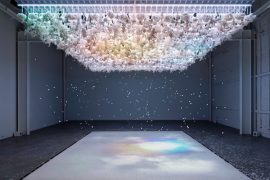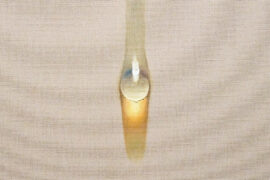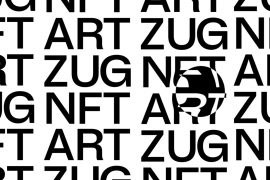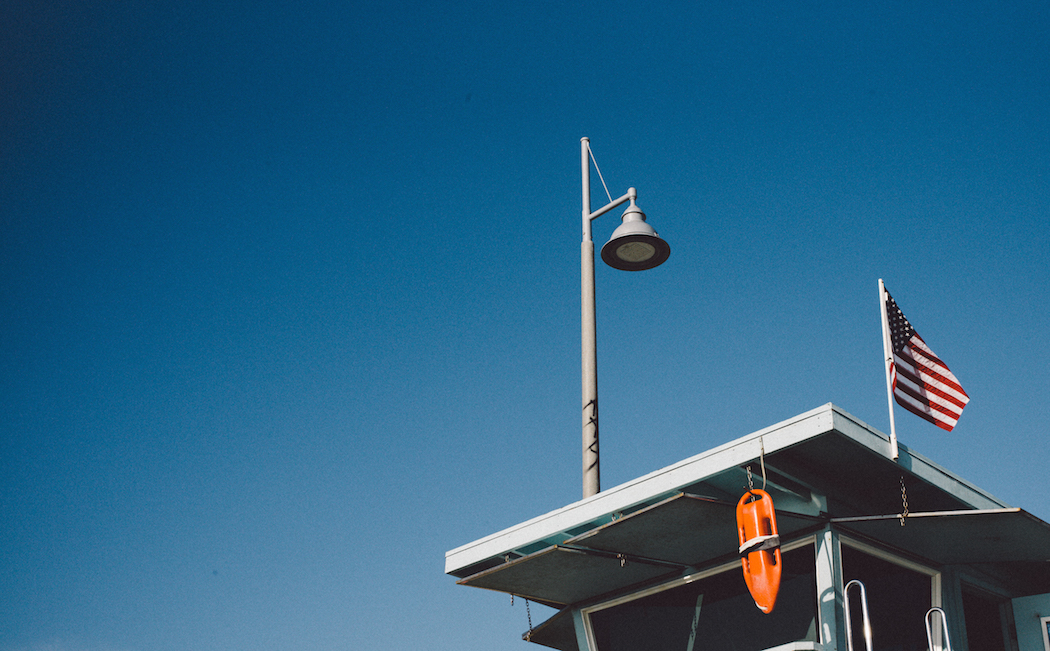A shimmering wave of mirror-polished stainless steel now graces the entrance of Aalto University’s newest research facility, bringing an unexpected dialogue between art and science to Finland’s premier technical campus. French artist Baptiste Debombourg’s public art commission ‘In Motion’ transforms the Kide Building into a dynamic landmark that captures and amplifies the movements of campus life.
Where Movement Becomes Art
The Kide Building, designed by SARC+SIGGE Architects with Max Hartman as lead designer, serves as home to Aalto University’s School of Basic Sciences and School of Electrical Engineering. Its strategic location at the heart of the Otaniemi campus places it along the recognizable vista toward Alvar Aalto’s iconic Undergraduate Center—a positioning that deeply influenced Debombourg’s artistic vision.
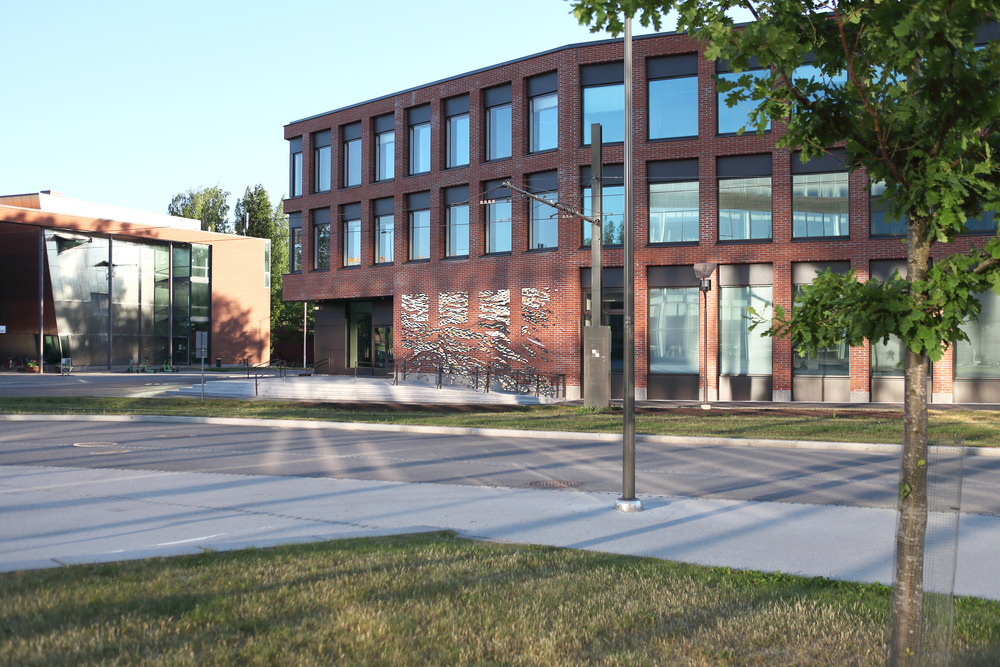
“The important position of the building at a crossroads – a central passage of pedestrians, cars, trams and the vicinity of the sea – inspired him to create a logic of these interactions,” explains curator Outi Turpeinen. The artist drew inspiration from the interplay of light and sea waves, translating these natural phenomena into an architectural intervention that responds to the building’s unique urban context.
Light, Reflection, and Resilience
The installation consists of undulating mirror-polished stainless steel panels suspended 30mm from the building’s facade. This carefully engineered distance allows the material to catch and reflect the constant flow of campus activity—from students hurrying to lectures to trams gliding past. The steel’s resistance to sub-zero temperatures makes it perfectly suited to Finland’s climate, ensuring the artwork maintains its reflective brilliance year-round.
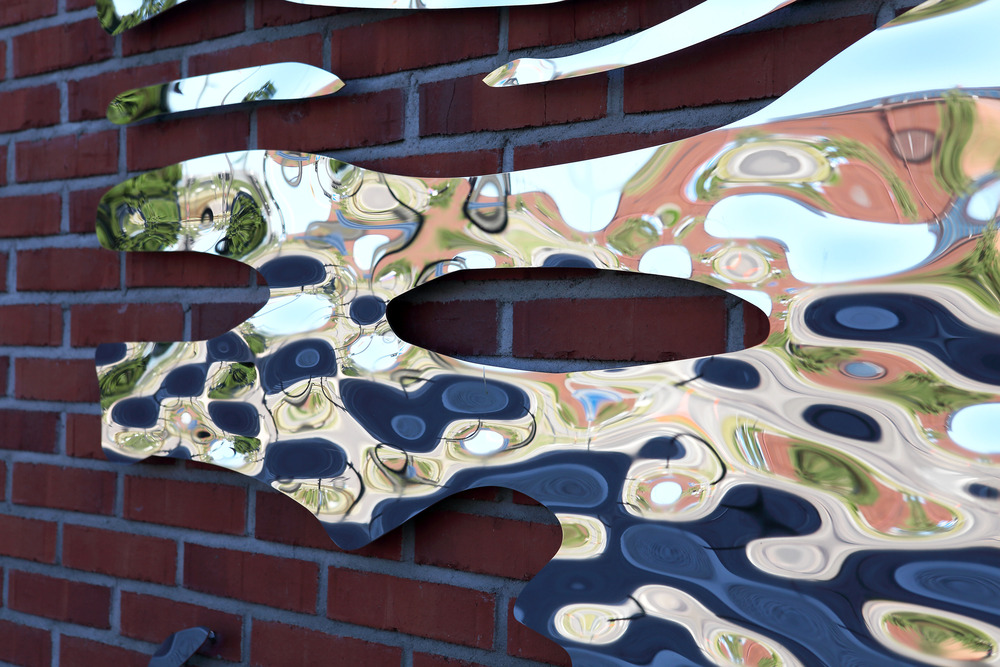
The exterior portion follows the structure of the first floor’s windows, creating what Debombourg describes as “an uninterrupted liquid flow.” Inside, visitors encounter a complementary installation resembling a wave’s splash, welcoming them with its sense of captured motion. The dual installation creates different atmospheric experiences depending on light conditions, remaining effective even in Finland’s darker months.
Beyond Monumentality
While ‘In Motion’ commands attention through its scale and luminous presence, it embodies Debombourg’s characteristic approach to public art. Known for work that combines monumentality with fragility, the artist creates what he calls “monuments in a state of convalescence”—pieces that speak to resilience rather than pure power.
This philosophy particularly resonates at a research institution where scientific inquiry often involves examining forces in motion, from the behavior of materials under stress to the flow of electrical currents. The artwork doesn’t merely decorate the building; it materializes the very concepts explored within its walls.
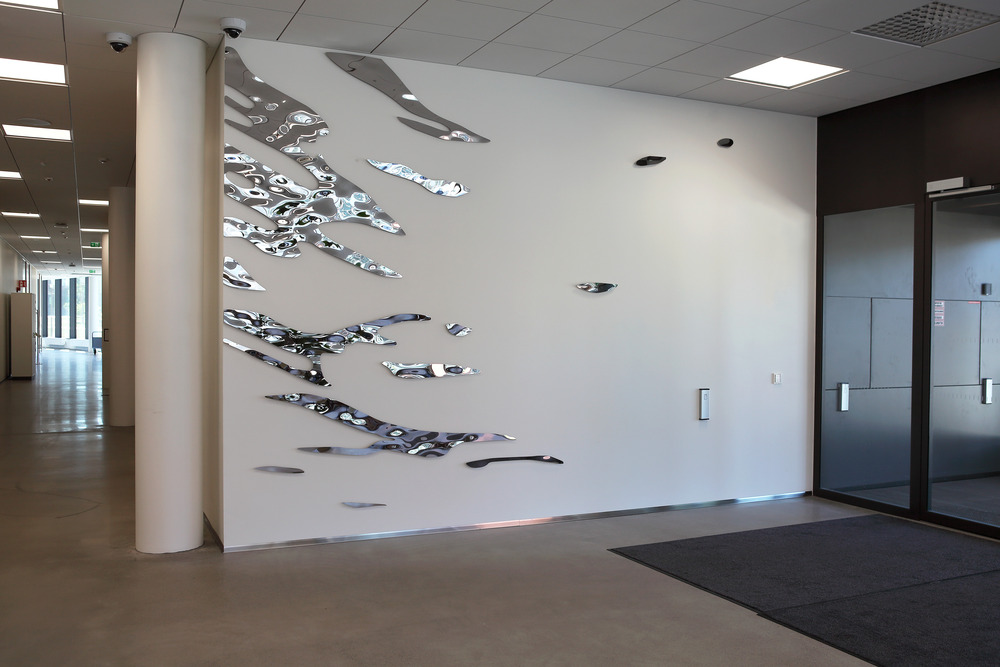
A New Campus Landmark
For the thousands who pass through this central campus intersection daily, ‘In Motion’ offers shifting perspectives that change with viewing angle, time of day, and weather conditions. Tram passengers catch glimpses of distorted reflections that fragment and multiply the familiar campus landscape, while pedestrians find themselves part of an ever-changing visual composition.
The installation succeeds in what public art aspires to achieve: creating a sense of place while opening new ways of seeing. In doing so, it transforms a functional research building into a beacon that signals Aalto University’s commitment to the intersection of artistic vision and scientific innovation.
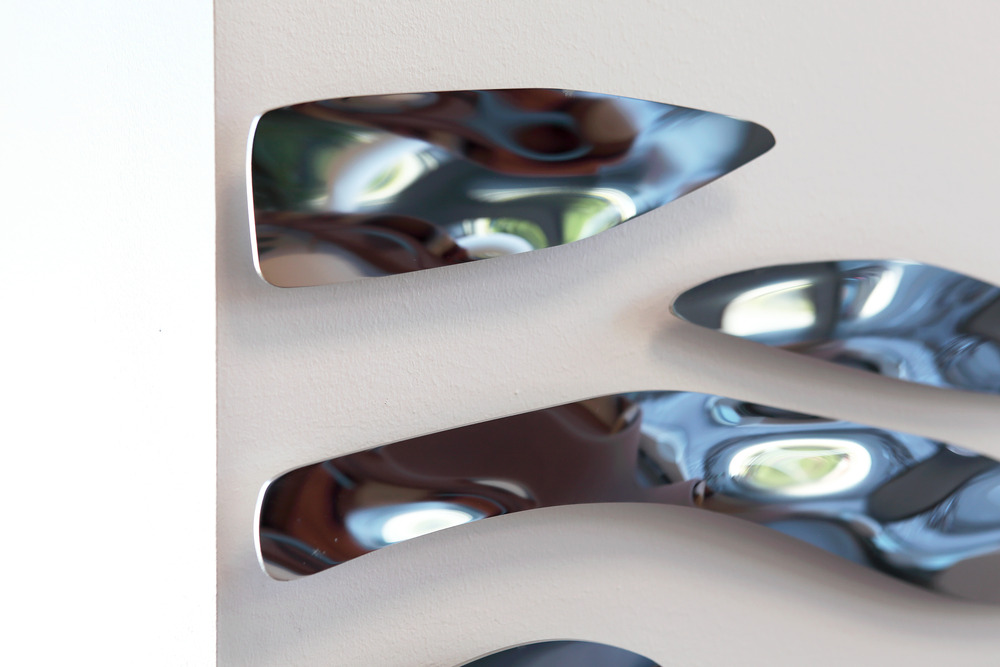
‘In Motion’ stands as a testament to the power of thoughtful artistic intervention in academic spaces, proving that the most effective public art doesn’t just occupy space—it activates it.
Photo credit: Baptiste Debombourg | Adagp | V2com


